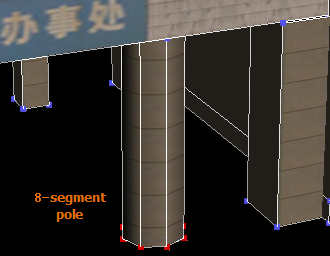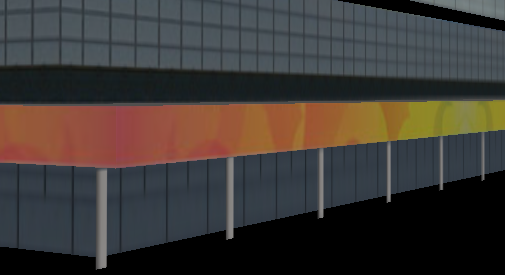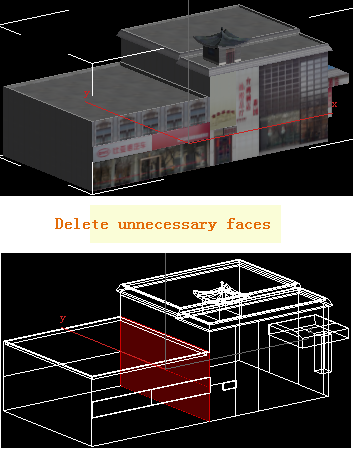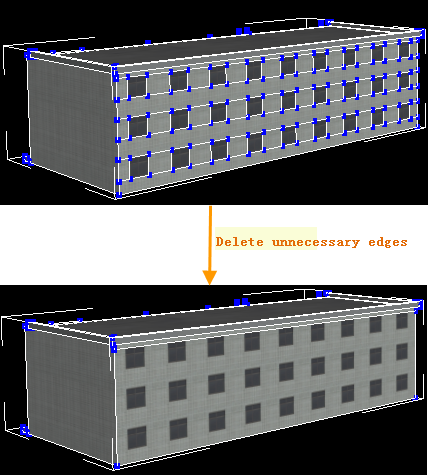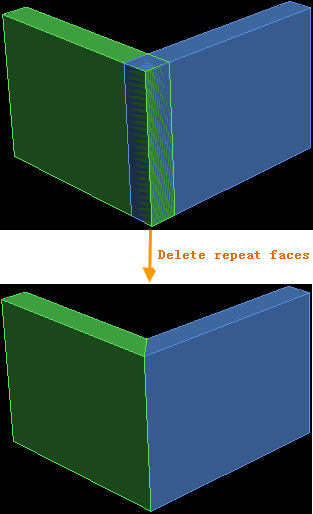Requirements for the model
A better structure is shown by using the least number of faces.
- Delete unnecessary faces, such as the floor of a building or the faces where two walls are next to each other, as shown in the following figure:
- Delete extra line segments, vertices, and stray points, as shown in the following figure. Do not cut out the line segments on the window, but use mapping to represent them:
- Minimize the number of segments for surfaces, cylinders, and spheres.
The number of relatively large column sections of the - building should be 8-12;
The number of - small column segments should be 6-8;
The number of - smaller column sections is less than 6, depending on the situation. In some cases, it can be set to the smallest 3 sections.
If there are many columns - in a row, you should use a transparent map to achieve the effect of columns, as shown in the following figure:
- The minimum distance between two faces of the same normal should be greater than 0.3 meters to avoid coplanar flickering, such as billboards. If the distance between the two faces must be less than 0.3 m, the lower face needs to be holed to avoid coplanar flicker. In the case of large faces of more than 20 meters repeating on the same normal, it is better to dig holes in the lower faces.
- Avoid overlapping, and delete it reasonably in case of overlapping, as shown in the following figure:
- Models that can be represented by maps should be represented by maps as much as possible (it also depends on whether it is cost-effective to reduce the number of faces in exchange for increasing maps).
- After the model is made, you need to cancel all frozen objects and hidden objects, optimize shaders, empty shaders, and empty the map directory. If there are useless frozen and hidden objects, you need to delete them.
